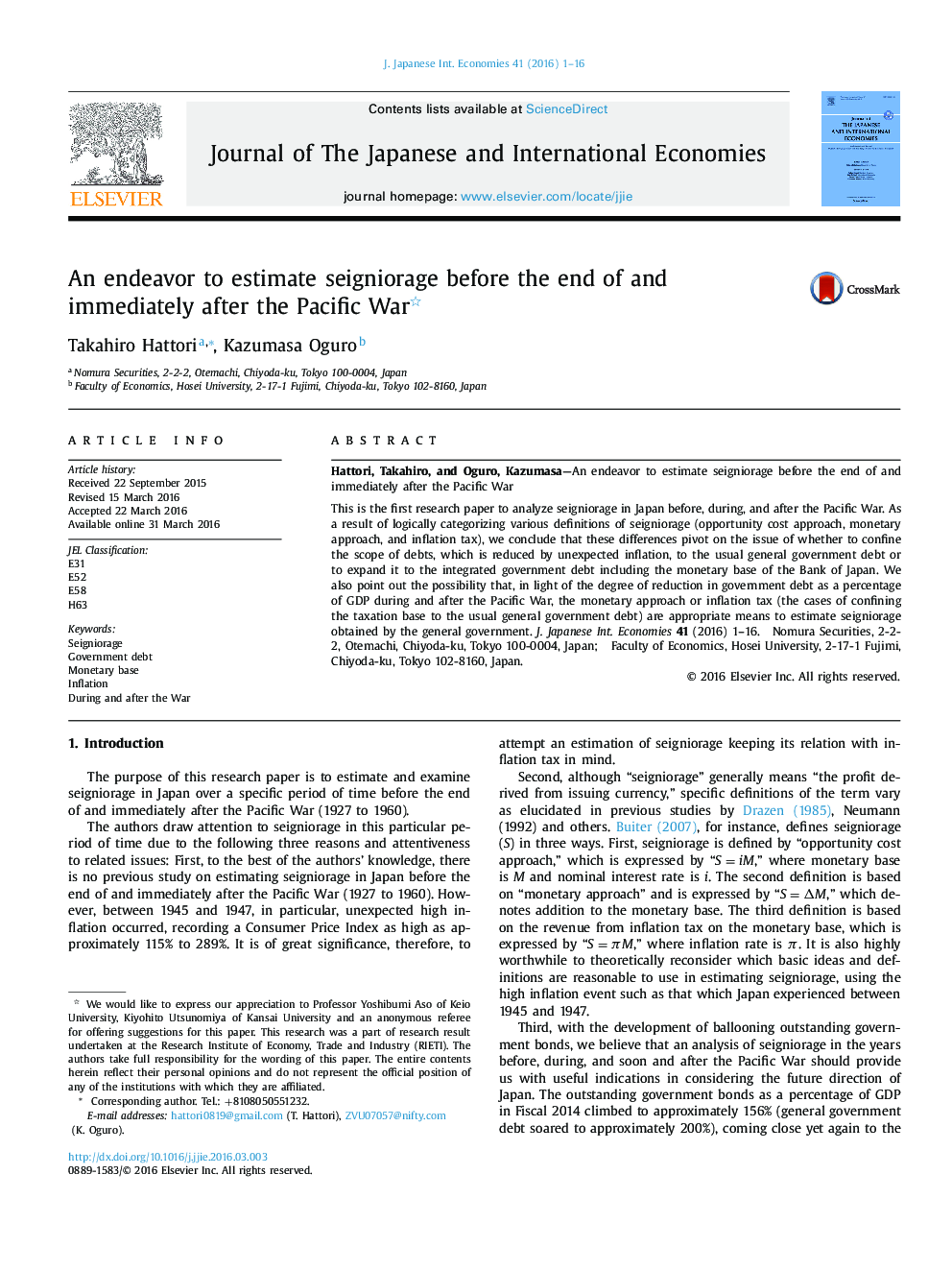| Article ID | Journal | Published Year | Pages | File Type |
|---|---|---|---|---|
| 964877 | Journal of the Japanese and International Economies | 2016 | 16 Pages |
Highlight•We examine seigniorage in Japan before, during, and after the Pacific War.•Definitions of seigniorage depend on the scope of government debts.•Seigniorage just after 1945 was dramatically different depending on the definitions.•Monetary approach or inflation tax should be a proper measure after 1945.
This is the first research paper to analyze seigniorage in Japan before, during, and after the Pacific War. As a result of logically categorizing various definitions of seigniorage (opportunity cost approach, monetary approach, and inflation tax), we conclude that these differences pivot on the issue of whether to confine the scope of debts, which is reduced by unexpected inflation, to the usual general government debt or to expand it to the integrated government debt including the monetary base of the Bank of Japan. We also point out the possibility that, in light of the degree of reduction in government debt as a percentage of GDP during and after the Pacific War, the monetary approach or inflation tax (the cases of confining the taxation base to the usual general government debt) are appropriate means to estimate seigniorage obtained by the general government.
